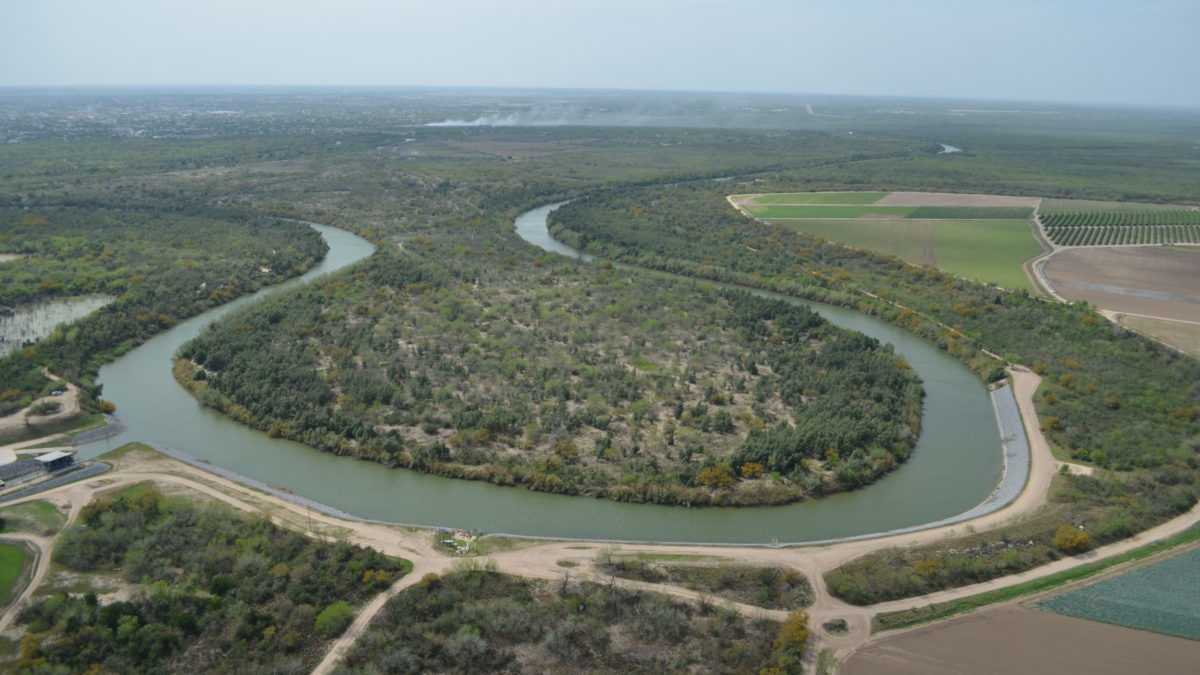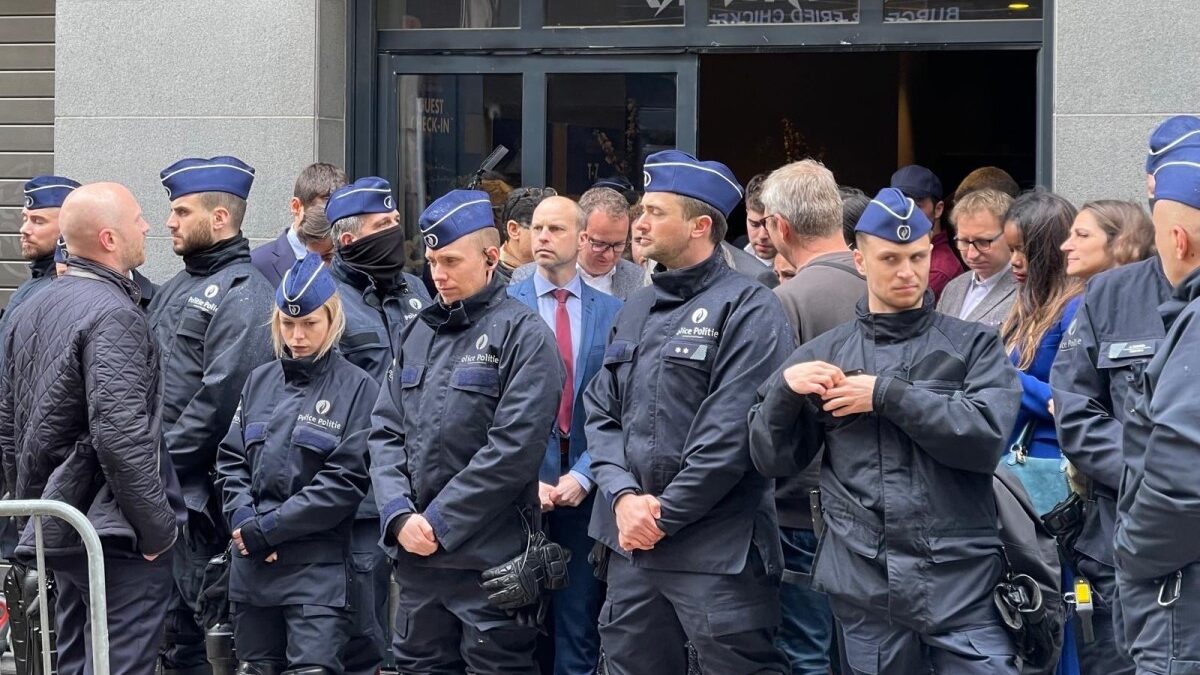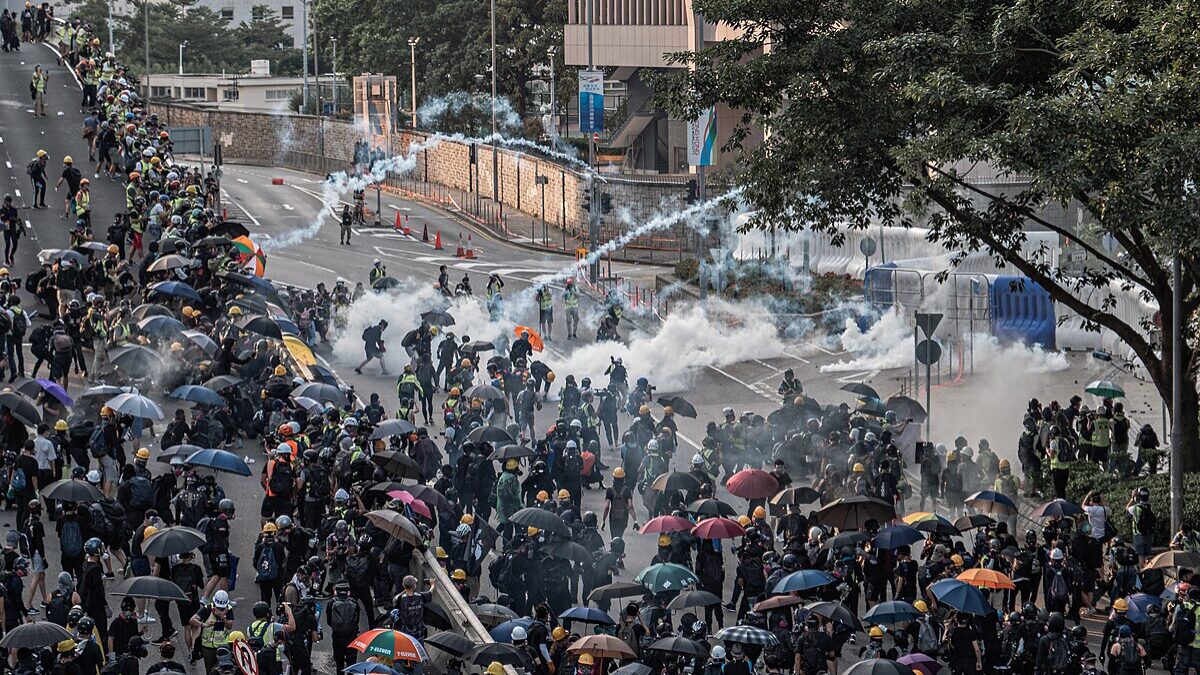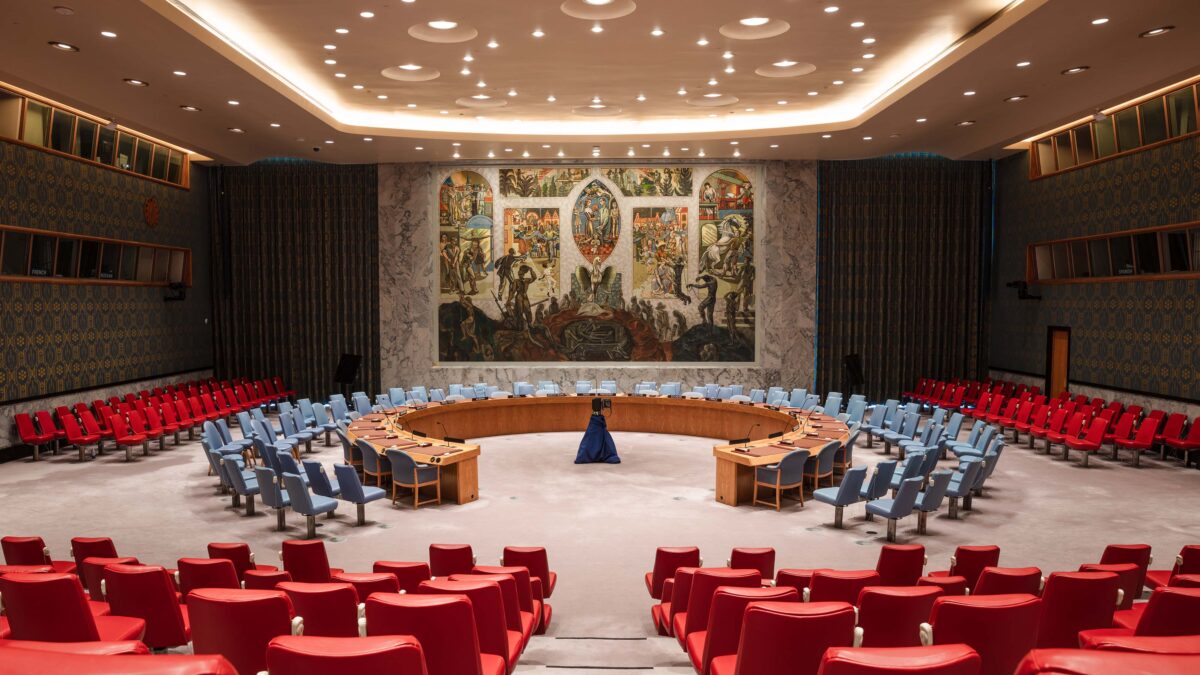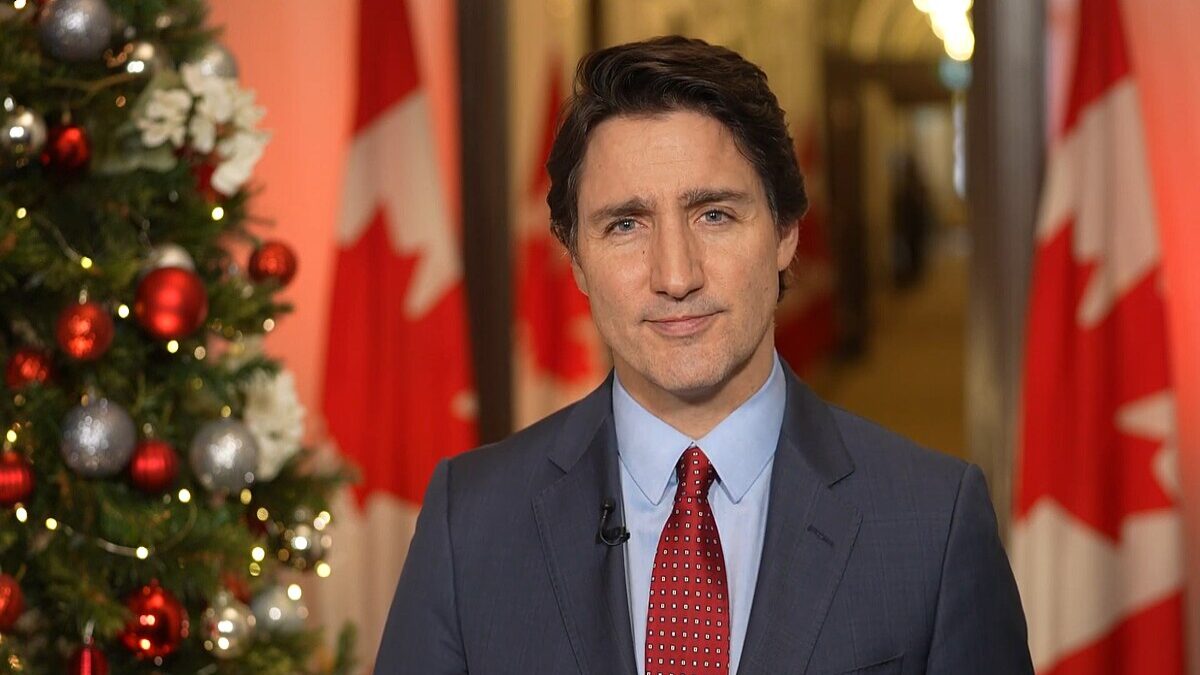Video footage recently surfaced on Twitter showing C4 explosives being dropped by a drone near a town in Michoacán, Mexico, reportedly by members of the Jalisco New Generation Cartel, following hours of clashes between armed groups.
In the video, a small explosion hits a woodland camp, a cluster of tents amid dense trees and dirt roads. Men scatter, running for cover. Another volley of explosives is released. When it hits, the camp erupts in flames. The drone lingers, its camera darting around, zooming in and out over the camp as it burns, like it’s looking for something. Seconds later, the drone is shot out of the sky.
It’s the kind of video clip that surfaces on social media now and then, offering a glimpse of outlandish happenings in Mexico. Most Americans have no way of making sense of these videos, or imagining what they portend.
The easy conclusion to draw is that Mexico has serious problems with organized crime, as it has for decades. But armed drones are something new, part of what some security experts have called an “arms races between the various belligerent criminal organizations” in Mexico’s multi-decade drug wars.
In this particular case, narco-drones are being deployed in a turf war in and around the city of Tepalcatepec, which sits on the border of the states of Michoacán and Jalisco, about 350 miles west of Mexico City. Local news reports indicate the Jalisco New Generation Cartel, commonly known by its Mexican acronym, CJNG, has launched multiple drone strikes in the area in recent weeks, escalating months of intermittent gunfights and ambushes.
CJNG is one of the most powerful and ambitious cartels in Mexico, and it appears determined to take control of the state of Michoacán. Since 2019, the cartel has been battling a loose confederation of other armed groups collectively known as the United Cartels, as well as the Mexican National Guard.
Many of these other groups began as autodefensas, or self-defense militias, whose purpose was to resist the encroachment of cartels like CJNG. But many of them, including those in Tepalcatepec, eventually got involved in drug trafficking. They became little cartels.
It’s Not Cartels vs. The Government
This is just one of many ongoing narco conflicts in Mexico. In America, awareness of it amounts to a disturbing 35-second clip on Twitter of a drone bombing a camp. But that one clip represents a depth of violence and corruption in the state of Michoacán that’s endemic to nearly all of Mexico, from rural backwaters to the heart of Mexico City.
And it’s not as simple as cartels versus the government because the two groups often overlap. Last March, a former mayor of the town of Aguililla, about 50 miles south of Tepalcatepec, was arrested in Guatemala on a U.S. warrant for allegedly brokering a $4 million deal on behalf of the United Cartels. The plan was to ship a half-ton of methamphetamine to Florida, hidden in concrete tiles and house paint.
With the assistance of the U.S. Drug Enforcement Administration, the former mayor was taken into custody in Guatemala City and the drugs in Florida were seized. It was the largest meth seizure in Miami-Dade County history. Hours after the arrest, CJNG attacked Aguililla in force. According to some reports, 26 people were killed in what amounted to a massacre. Eight of them were decapitated.
Cartel violence of this sort is getting worse in Mexico. Mexican President Andrés Manuel López Obrador, who took office at the end of 2018, promised an end to the violent drug wars of earlier administrations. His policy toward the cartels, he said, would be, “abrazos, no balazos” — hugs, not bullets.
It has not worked out very well. The homicide rate has been steadily rising in Mexico since 2014, but under López Obrador it has spiked. The last two years have seen a record number of murders, and this year is already off to a bad start. On Jan. 6 in Zacatecas, an SUV with ten beaten, murdered corpses inside was dumped next to a Christmas tree outside the governor’s office. The mostly rural state of Zacatecas has Mexico’s highest murder rate thanks to CJNG and the Sinaloa Cartel, which are battling for control of the area and its numerous fentanyl labs.
The Sinaloa Cartel is of course the other major criminal organization in Mexico, and, at least among ordinary Mexicans, has come to be loosely associated with López Obrador himself. Why? For several reasons. There is the conspicuous fact that he has never breathed a word against the country’s most powerful and notorious cartel, even as he inveighs against his political opponents in the most militant terms.
There is also, more concretely, the Battle of Culiacan. In October 2019, Mexican National Guard troops arrested Ovidio Guzmán López, the 29-year-old son of former Sinaloa Cartel boss Joaquín “El Chapo” Guzmán. In response, teams of Sinaloa gunmen, outfitted with armored vehicles and heavy weaponry, besieged the city and trapped the guardsmen. The standoff ended on a direct order from López Obrador himself, who told the troops to release their prisoner and stand down to avoid more bloodshed.
Five months later, López Obrador traveled to Badiraguato, a mountainous marijuana- and poppy-growing region of Sinaloa long associated with Mexico’s drug trade — and the birthplace of El Chapo. Defying his own pandemic protocols, the Mexican president was filmed shaking hands with El Chapo’s 92-year-old mother, María Consuelo Loera Pérez, and embracing a Guzmán family representative.
And then there is the still-unreported story of local and legislative elections held last January. Just before the polls opened in Sinaloa, cartel gunmen rounded up every campaign volunteer and poll worker for the Institutional Revolutionary Party, the PRI, as well as those of every other party except López Obrador’s MORENA party. The cartel held them in secure locations until after the polls closed, then released them unharmed.
That is, the Sinaloa Cartel effectively shut down the entire get-out-the-vote effort of every party statewide, except MORENA. The result? MORENA won the election, wresting control of Sinaloa from the PRI. The story remains untold because no one in Sinaloa, out of hundreds of people across the state who were allegedly detained that day, will go on record.
Mexico’s Institutions Are Collapsing
Under López Obrador, at the same time the cartels seem to be operating with impunity, the military’s role in civil society has been expanding.
The National Guard was formed in 2019 shortly after López Obrador took office, the idea being that it would replace the Federal Police as the chief law enforcement arm of the government. Although ostensibly under civilian control, the National Guard is led and trained by military officers, and its ranks consist largely of soldiers.
Yet since its inception, López Obrador has mobilized the Guard for a vast array of civilian and domestic law enforcement purposes. That is, he has put what are traditionally civilian tasks under the remit of what is effectively a military force.
He has also not tried to hide this. A recent report from Human Rights Watch noted what any recent visitor to Mexico City would surely see: the National Guard is everywhere. It runs the Mexico City airport, it’s in charge of a large number of civilian construction and development projects, and it has become the enforcement arm of the National Institute of Immigration, or INM.
The INM is the federal agency charged with caring for migrants and managing their transit through Mexico to the United States. But in recent years it has become, together with the National Guard, an active participant in migrant trafficking, with all its attendant abuses and violence. Indeed, the industrialization of illegal immigration — imposing “taxes” on migrants has become a significant source of income for the cartels and gangs that control northern Mexico — made this development all but inevitable.
When López Obrador agreed in May 2019, at the behest of the Trump administration, to stem the flow of illegal immigration from Central America, he charged the INM and the National Guard with this mission. By then, migrants were paying smugglers and cartels thousands of dollars per person to travel to the border and cross illegally into the United States. A black market was already well established. The INM and the National Guard, authorized to “enforce” Mexican immigration laws, are now active players in that black market.
The one thing the National Guard does not seem to do is fight the cartels. In November, the Associated Press published a dispatch from Aguililla chronicling how government soldiers have stepped away from an ongoing turf war between the CJNG and a group called the Viagras gang, which dominates much of Michoacán. Instead of trying to stop the two sides from fighting, or even stop them from extorting local residents, “soldiers guard the dividing lines between gang territories so they won’t invade each other’s turf — and turn a blind eye to the cartels’ illegal activities just a few hundred yards away.”
Alejandro Hope, a security analyst in Mexico City, told the AP that the government is trying to “administer the conflict.” The soldiers, he said, “are not there to disarm the two sides, but rather to prevent the conflict from spreading. The problem is that we don’t know where the army draws the line, what they are willing to accept.”
Elsewhere in Mexico, the government’s tolerance for cartel violence is seemingly limitless. Even when cartels target local police officers — as CJNG has been doing in the state of Guanajuato since 2018, hunting down and killing hundreds of cops in their homes — the National Guard does nothing.
The Crisis In Mexico Will Not Stay There
The reason all this should matter to Americans is that U.S. policymakers, in both parties, are captive to the increasingly dangerous delusion that Mexico is a competent and trusted partner, and that our two countries can and should work together to solve problems like organized crime, drug trafficking, and illegal immigration. The animating idea, decades old now and woefully out of date, is that Mexico is a peer nation, acting in good faith, and that we all want the same things.
This gauzy conception of Mexico is how the Biden administration was able to come up with a framework for a U.S.-Mexico security relationship that’s utterly divorced from reality. A joint statement released back in October after a meeting between President Joe Biden and López Obrador outlines what’s supposed to be an update to the George W. Bush-era Merida Initiative, which was focused on helping Mexico wage war on powerful drug cartels.
The new initiative, dubbed the U.S.-Mexico Bicentennial Framework for Security, Public Health and Safe Communities, seeks to address not just “transborder crime” but also things like substance abuse, “root causes” of violence, and efforts to improve education and economic opportunity — all while “ensuring racial equity,” of course.
Given the stakes, however, all it amounts to is a series of exhausted platitudes. The reality is that the Mexican state is collapsing, and rather than having a partner to address the “root causes” of violence, we don’t even have a partner to address what might well become a humanitarian catastrophe on our border this spring.
Make no mistake: as things deteriorate in Mexico, they will also deteriorate on our southwest border. Federal border authorities made more than 173,600 arrests at the southwest border in November, up from 164,300 in October (December’s numbers, as of this writing, are still unreported for some reason). Reporting on these figures recently, the Washington Post framed them as no big deal. “Border arrests ticked up 5 percent in November, first increase since summer,” the headline ran.
In fact, we’re still in the midst of an historic surge in illegal immigration. After an unprecedented 1.7 million apprehensions at the border in fiscal year 2021, Biden’s border crisis continues to roll along, month after month, shattering records with huge, ongoing surges in illegal crossings at a time of the year when they would have normally dropped off. At this rate, we’ll easily see more than 2 million border arrests in fiscal year 2022, breaking the all-time record for a second straight year.
Amid this ongoing crisis, though, a worse one is brewing far south of the border, in the heart of Mexico. If we don’t start paying attention to that crisis, if we refuse even to acknowledge it, we’ll eventually look back on our current border troubles as a simpler, easier time.
